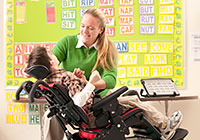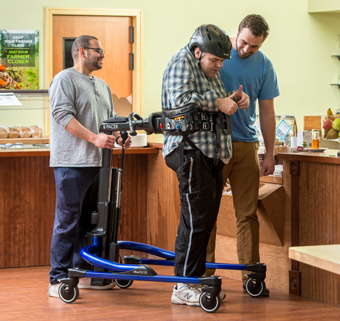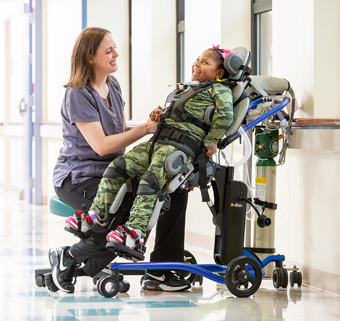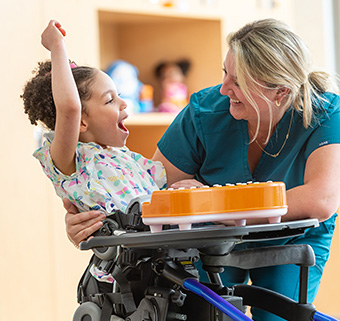Active Sitting & Task Participation with Adaptive Chairs
| March 2011Adaptive seating is a big part of pediatric and school-based therapy. Active sitting chairs, through providing unique features and prompts, support postures that enable. With this in mind, the following post series will be dedicated to exploring the concepts and benefits of adaptive seating. This first post – Active Sitting for Task Participation: The Role of Adaptive Chairs – is introductory and will get you off to a good start. Then, learn more with the next two posts – Pediatric Adaptive Seating Benefits: Doing Away with Passive Seating and Symmetrical Posturing and Adaptive Seating for Task Participation. Full acknowledgment for concepts regarding adaptive seating for task performance is credited to Karen M. Kangas OTR/L. Material has been presented at the 18th International Seating Symposium and published in Rehab Management.
 Active Sitting for Functional Tasks
Active Sitting for Functional Tasks
Active sitting for function is not a static, single position. Sitting is an active range of postures that enables the mind to think, the eyes to see, and the head, arms and hands to accomplish a task. This is not an immobile position, but rather an “active holding” position to allow a range of controlled pelvic mobility simultaneous to the movement of the trunk and upper extremities.
For a healthy human being, this pelvic weight bearing and pelvic stability occurs naturally in the context of the task. In order to perform a task while sitting, the pelvis shifts anteriorly, which sends a message to the shoulder girdle and head about the body’s position relative to gravity. This shift of the pelvis forward into “active holding” or “co-activation” signals that the body is ready to work. The body will “kick in” trunk extension tone which lends further power to the pelvis and lower extremities for increased stability and weight bearing, and to the shoulder girdle and head for movement.
This combination of pelvic girdle stability with shoulder girdle mobility provides a foundation from which the head and upper extremities can be controlled and moved which is a critical aspect to active sitting.
The shift of the pelvis into an anterior posture, the subsequent active weight-bearing in the lower extremities, and the increase in extensor tone of the trunk is also an ‘alerting’ reaction throughout the musculoskeletal system. This body control is achieved via the body’s relationship to gravity, through activation of the vestibular system and through proprioception. Weight bearing through the pelvis and lower extremities enables the body to stabilize and dynamically respond and react to gravity throughout the task, and is critical to every movement.
Active sitting for function is a subconscious or inherent human characteristic. Human beings naturally carry the knowledge of this seated posture in the mid-brain’s memory bank. This motor skill emerges through experiences of seated task demands throughout motor development, and becomes part of us as a subconscious postural behavior.
Now this is assuming that a child has been correctly positioned for function, but what about wheelchairs and 90/90/90 positioning? Learn more in the next post: Pediatric Adaptive Seating Benefits: Doing Away with Passive Seating.






